If you don’t have a back yard, or simply want to experiment with indoor growing, a container garden is an effective way to grow many types of vegetables. The container (or pot) can be situated on a balcony, a rooftop, a community patio, near your windows or in a lighted/heated basement.
The advantage of growing vegetables in pots or containers is control over environmental conditions, and if proper care is provided, the yield can be just as much or even more than what one gets from growing the vegetables outdoors in a traditional garden.
The amount of work required to grow vegetables in pots is generally less than growing these plants outdoors. However, before you start growing vegetables in pots, there are some important things to be aware of:
If you want a good yield with pot-grown vegetables, you need a large pot (the bigger, the better). The reason for this simple – vegetables need space to grow – both the vegetable itself, and its roots. Always avoid small pots as they often limit root growth and cannot store adequate water.
Do not limit yourself to the pots available in gardening centers; you can use a bucket, a tub, a barrel, or a wooden box, basically any container that can hold soil. If necessary, you can make holes in the bottom to drain off excess water.
If you’re selecting a pot for winter growth, consider a black one. Black pots tend to absorb and retain heat, which is important when growing veggies in a cold environment.
Most potted vegetables should be watered twice a day. However, house plants (vegetables or otherwise) tend to be at the mercy of the gardener – if the gardener forgets to water for long periods, especially during plant infancy, the plant will likely die. Moreover, when gardening in warm environments, it may be necessary to increase watering or take additional measures, such as a double potting. This simply means placing the original potted plant into a larger pot, with peat moss stuffed between the pots. In this case, the inside pot should be made of clay because, unlike ceramic or plastic, clay tends to absorb moisture which will keep the roots moist.
Add a quality, liquid fertilizer to the plants no more than once a month (read the instructions for precise amount).
Try and place the pots where they will receive good ventilation, and maximum sunlight, and check the plants regularly for insects.
If natural sunlight is not available, growing vegetables in pots can be done indoors but you will need to invest in an alternative light source. The basic role of artificial light is to; substitute natural sunlight, keep the plants warm, simulate photosynthesis, and basically help the plant mature. However, you need the right bulb or fixture to get the best results, some plants need more light than others. Some of the available options for lighting include fluorescent lighting with either full spectrum or white lights, or the use of generic incandescent lighting with heat lamps, or regular bulbs. Most experts recommend fluorescent lights as they are far superior to incandescent lighting for this purpose. Ultimately, the entire planting area should be illuminated. An incandescent light bulb should be placed at least 2 feet over the veggies, whereas, LED and fluorescent lights tend to have lower heat production and need to be placed 6 to 12 inches above the plant. You will need to adjust the distance as the plants begin to mature – different plants have different lighting requirements, and placement at different heights.
Finally, remember that even though you can grow vegetables in pots and containers, you still need to be diligent – the more care you give your veggies, the better the resulting yield.
What type of vegetables can be grown in pots?
In reality, almost any vegetable can be grown in a pot, here’s a list of healthy vegetables that generally produce a good yield:
Onions
Spring onions are one of the easiest vegetables to grow in a pot. These onions do not require very deep spoil and grow very fast. All you do is sow the seeds about half an inch into the soil and water them. In roughly eight weeks, you will have ample spring onions. And the best thing is, you can grow them all year round if you provide enough heat in cooler environments.
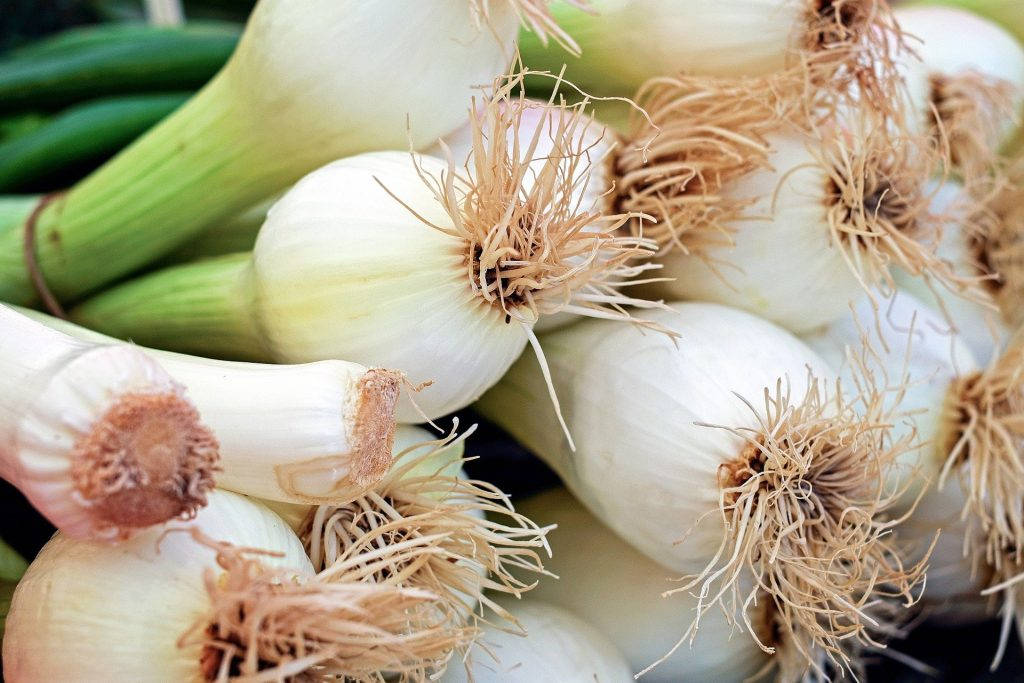
Lettuce
Lettuce is another healthy vegetable that can be grown in most containers, including a pot. The key is to sow several seeds roughly an inch deep at intervals of a few days to ensure the plants do not mature at the same time. The soil must be kept moist. Unlike other vegetables, lettuce does not need a lot of sun. However, do make sure that the pots have good drainage as the lettuce roots can become moldy. A five-gallon window box is ideal. The easiest variety of lettuce to grow is salad bowl and ruby.
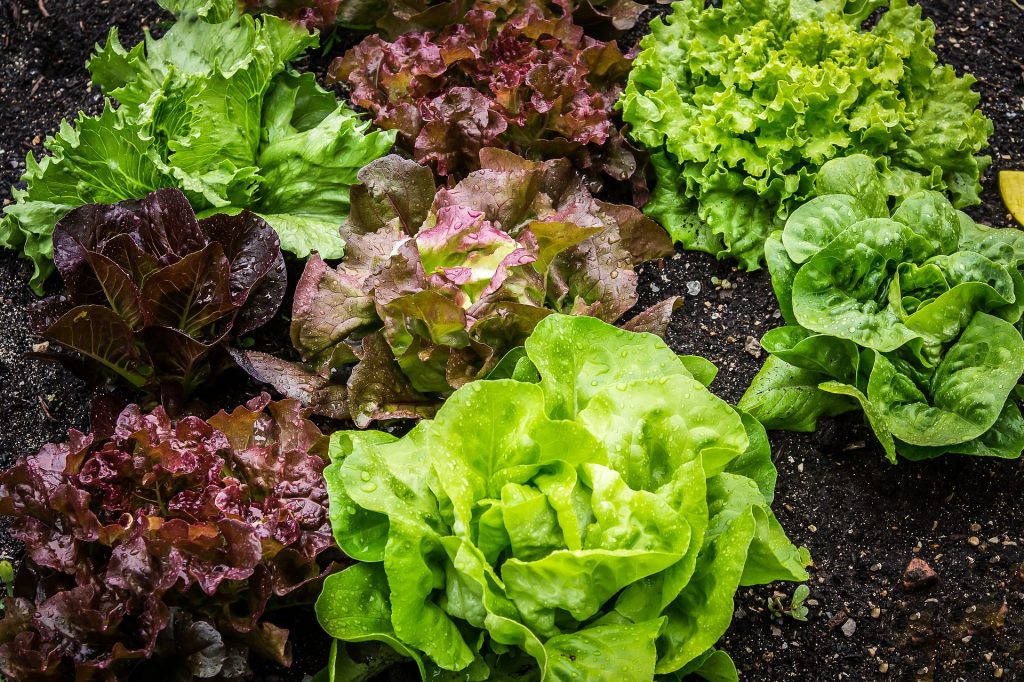
Peppers
Sweet peppers are another vegetable that also grow well in a large pot. Both the purple and orange variety will grow well assuming plenty of sun (or equivalent lighting), regular watering, and good drainage. Remember, it is important to buy the appropriate seeds for indoor growing. Sweet peppers need space therefore a large pot or container is necessary. The best varieties of sweet pepper to grow in pots include; Long Red, Yolo, Cayenne, Wonder, and Sweet Banana.
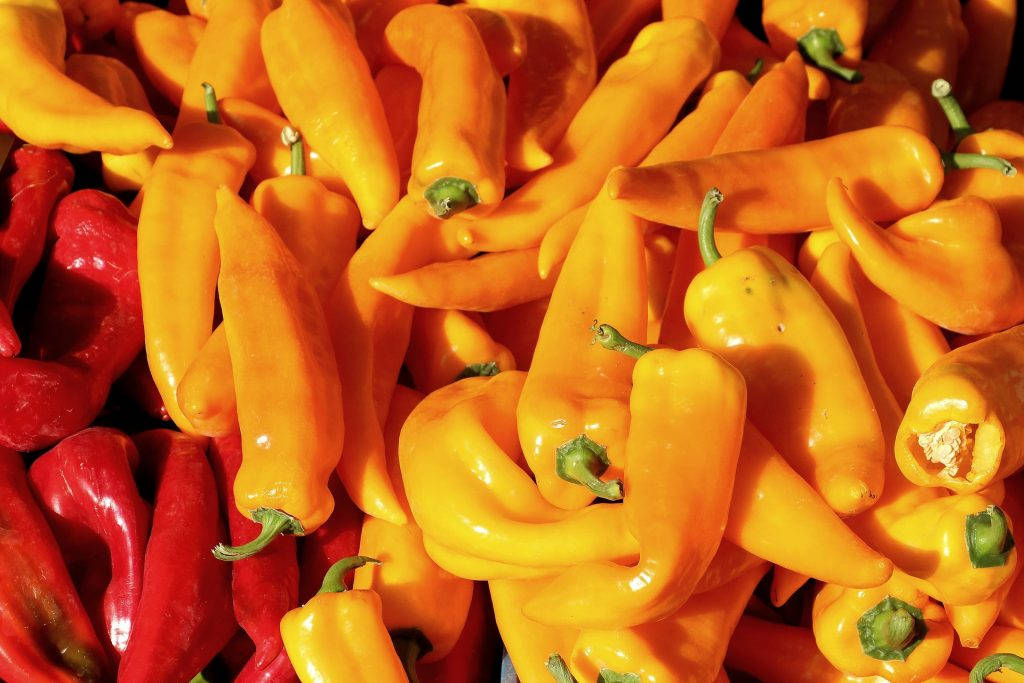
Herbs
All types of herbs can be grown in pots. For example, chives, mint, thyme, oregano, thyme, coriander and basil can be grown on the kitchen windowsill with little effort. However, because these herbs grow fast, only grow ones you use regularly. Herbs tend to lose their flavor if not used right away. The key to a good yield is good sunlight exposure and drainage.
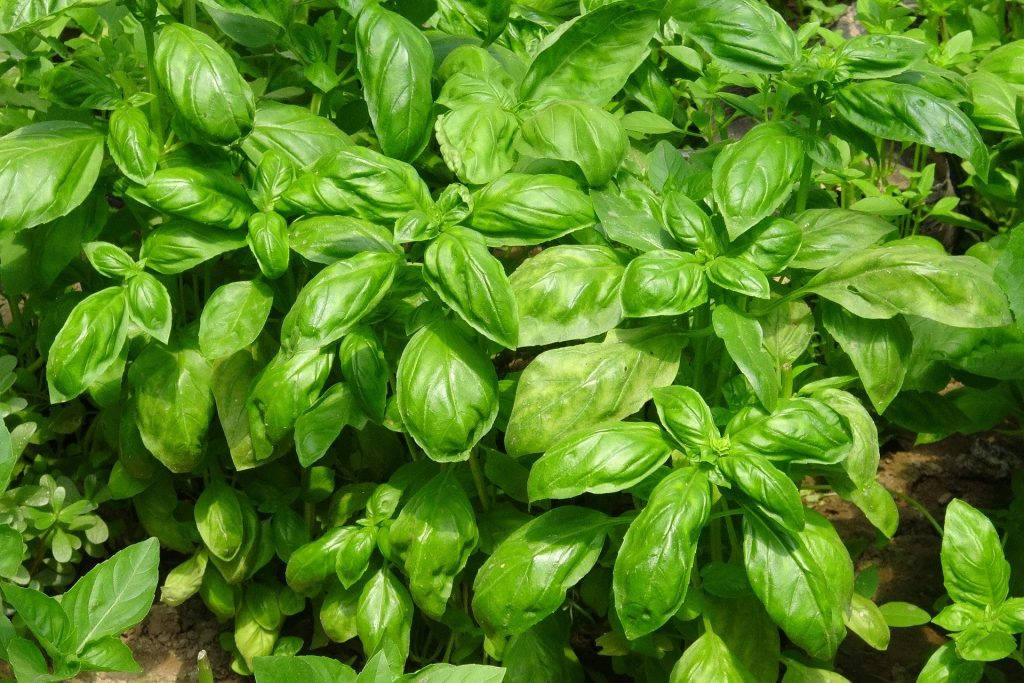
Tomatoes
Today there are small varieties of tomatoes that grow exceptionally well in large containers. However, because tomatoes do become heavy it is important to buy the short sticky plants that grow horizontally versus vertically. In some cases, you will still need to support the plant with stakes, trellises, or twine. Tomatoes do not grow well in the cold therefore you may need to provide additional warmth via a heat lamp. Tomatoes also require a lot of sun (or equivalent lighting) and good drainage. The best varieties of tomatoes to grow in a pot include; Sweet 100, Small Fry. Patio, Early Girl and Tiny Tim.
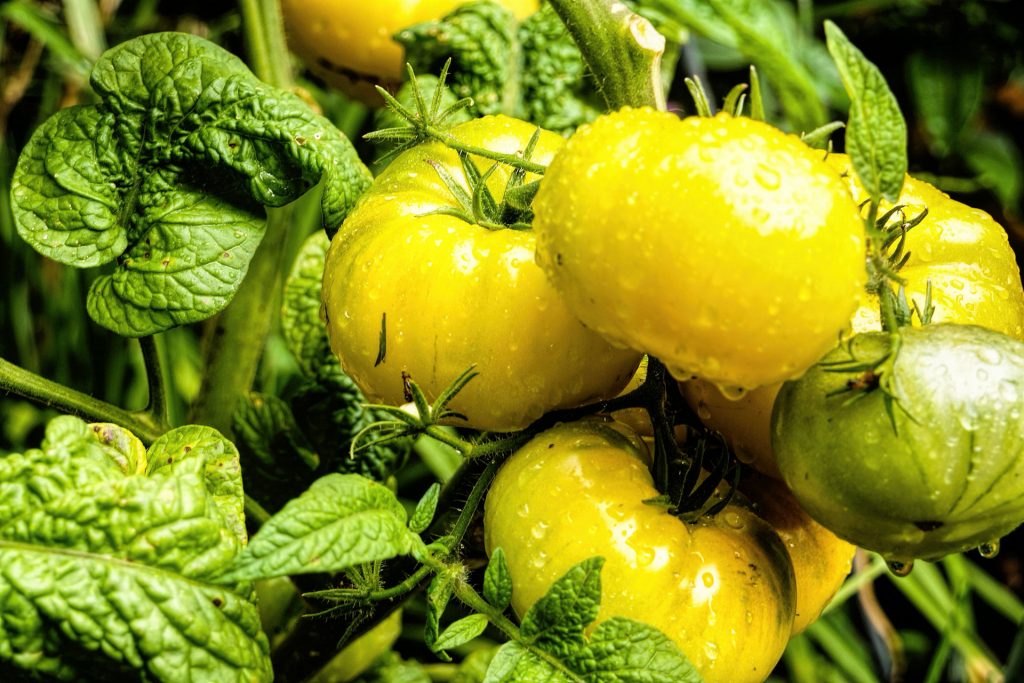
Garlic
Garlic is another healthy vegetable that is relatively easy to grow in a large pot/container. Assuming the soil is well aerated and watered regularly, garlic plants tend to thrive in pots. The great thing about garlic is that the soil needs minimal care and within one season, you can have large cloves of garlic plus leaves.

Conclusion
Growing vegetables in a pot is not difficult but it does require attention to detail, regular watering and checking the plant for insects.
Here at Smoky Bear Ranch, we plant our whole garden in pots – tomatoes, sweet peppers and hot peppers, lettuce, herbs, onions, potatoes, beans, squash, cucumbers, and more. We use many of the items we grow when preparing our homemade, hearty breakfasts.
Because our area has a very short growing season, we start our seeds inside early February to mid March using grow florescent lights and heat mats. We transplant them into 4″ or 6″ pots and move them into a heated greenhouse mid to late March so they can thrive under the natural sunlight. Once we’re fairly confident we’re past our last frost, usually late May or early June, we transplant them into large pots and most of them are moved outside to enjoy the fresh mountain air which also helps with any bugs issues that might arise. We have a drip system to keep the plants watered regularly and feed with a high quality fertilizer. Reaping the benefits of our home grown garden is wonderful and we love sharing it with our Lodge guests.
In most cases, if you provide the sunlight and warmth, vegetables will thrive. One of the best things about growing in pots is that you rarely need to deal with weeds. If you put in the effort during early spring, then by summer you will have ample, healthy vegetables for your meals, which is both rewarding and cost effective.

